Undeniably Urban: Cartography Meets Street Art at the Somerset House
This month, London’s Somerset House explores new territories with its highly anticipated show, Mapping the City.
This month, London’s Somerset House explores new territories with its highly anticipated show, Mapping the City. Forgoing the traditional representations of exhibitions past and opting instead for a more modern focus, this exhibition features the work of over 50 street and graffiti artists – some emerging and some already on the map, like Cept, Shepard Fairey, Swoon and Aryz – and offers a diverse and contemporary look at the antiquated art of cartography.
Executed in collaboration with dynamic arts organisation A(by)P, the locations conveyed in Mapping the City span myriad cities, countries, and continents. Though varied in nature, the selected cities have not been arbitrarily chosen; the artists were asked to render their own interpretations of the cities they call home. Additionally, due to the unique style of each artist, each map differs in artistic approach and aesthetic preference. Spanning myriad media – predominantly painted works on paper and digital pieces – and ranging from realistic depictions to the abstract, the maps presented in Mapping the City offer a unique – and highly artistic – trip around the world.
Mapping the City embarks at the Somerset House on 22 Jan 2015 and is on view until 15 Feb 2015. Bon voyage!
ADLER GUERRIER, An Exploration of Sense
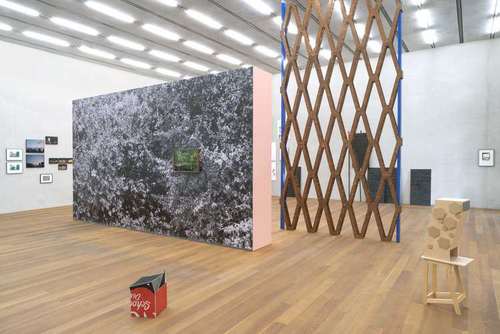
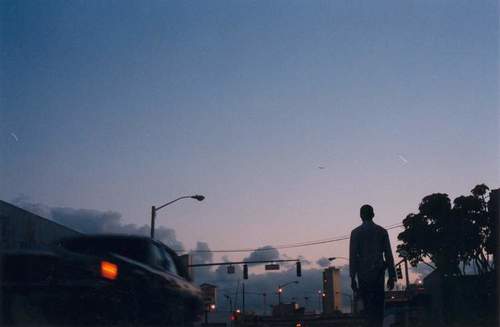
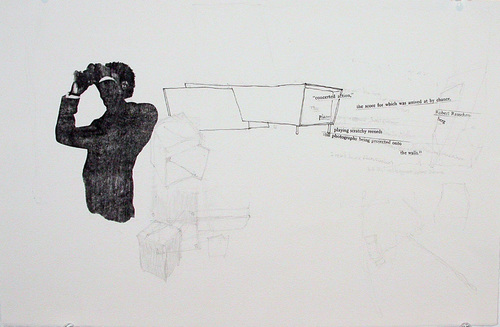

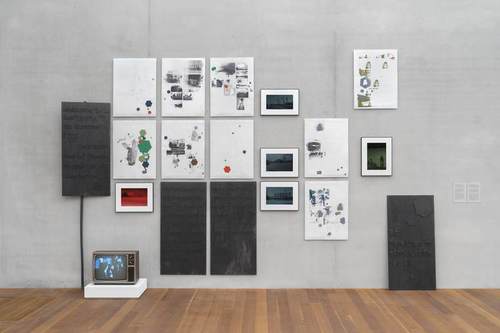
LIGHT
South Florida sun, windows filtering. I only think of light as in the visual. I don’t think of light as a weight, even though I probably should. What comes to mind is actual lighting and seeing what’s surfacing. Enlightenment comes into mind. There is a piece in my show Adler Guerrier: Formulating a Plot at Pérez Art Museum Miami that has a sort of light fixture as part of a theme. There is this lamp that is styled in the way of street lights in Paris. Gas lamps the way they were. When I saw that lamp and saw it on that building, I went back to just photograph that and it became a sort of item to make a series of work from and the whole thing had to do with the way adding light casts out darkness.
ILLUMINATION
In my work, I tend to just use found lighting. I don’t add light, especially at night, which forces me to find places that have particular lighting where all the interesting physical elements of the landscape, architecture or plants, are well defined or defined by the lighting there. During the daytime, in South Florida, it is not a thing to think about so much. Only the direction of lighting and the time of day, clearly. At noon it is the brightest light. Deep shadows are not always a good thing. Everything is lit so everything kind of looks the same, whereas in the early morning it is moody. I like the way light is filtered through plants. I look for situations and places where light is as much of an element that shapes space, that shapes objects, as other physical attributes like concrete and architecture.
VISION
There are two words there that are tricky. One is “vision.” What I envision sometimes is not so much physical, is not so much the work. It tends to be a couple of layers around the work. Sometimes I want to make a work that makes me think about a,b,c and makes me feel x,y and z. I know these six things but a lot of times I don’t know what that looks like, don’t know how that is going to be made and don’t know how important those six things are. The idea of vision is only a blueprint to make an artwork and really, in making the work, I sometimes find that something I wanted early on, I totally discard or I have to put aside. So much of my practice is a playing of what I want to do and contextualising that on site and finding that the site has really good things to offer and bring those forth and then finishing the work. That’s how vision comes into light. The process needs to be grounded somewhere. It needs parameters that are more than me.
MIAMI
I have lived here for most of my life now. This is the place where I think, this is the place where there is ease in the process of creating and thinking and conceptualising. It is a sort of comfort that comes with being at home and clearly prize that more than anything else even though there is all the other factors about Miami, like light and temperature in the winter months, and even our diversity. I am always finding myself discovering new little things or new thoughts and knowledge that are connected to other people who come here and pass through. This is a dynamic place. I like it a lot.
COLOUR
Colours are important. I like colours. Colours tend to be the distinctive marks that make a place. The palette that we choose for ourselves, to either wear, or colour our homes, or to make artwork with, tend to be the specific things that indicate intention. Colours for me are indicators that make a thing a thing. The palette that appears in South Florida is not just specific to South Florida. Other places in the world use that palette, but here in South Florida, when we see them, there is something about the combination of here and the palette that’s like “oh yes, this is a Miami thing, this is a Miami moment.” It makes your day, it makes a building, it makes a moment more special. This is where colours come into play. Colours are part of a language that is the primary handle to connect with something. In Miami we can show colours. We see colours really well, I guess. It is a vital thing.
THEME
The themes in the show [Formulating a Plot at Perez Art Museum Miami] are about this idea of place as stage and where both, the individual and communal narratives are developed. The individual narrative is as much mine as the artist who is developing the work and the communal narratives are the secondary and tertiary stories that are shared by either the viewer or are implied by Miami being a place that is in the stories. Another theme in the show has to do with character and by that we mean individual figures that help develop works and that help with development of narration in the works. The flaneur is one of them. The story about Amiri Baraka is another. The short story of Tang is another one. The figures that appear in the political signs are a fourth. Those are all sorts of characters that become a beginning place to explore really interesting stories within the works. A third theme is geometric language as a marker of an objective tertiary point to narrative. By that we mean that it is sort of a language that we find, like the concrete blocks, like the political signs. Those are a language that serves other entities that are also background to bigger things; that by bringing them back into the show, they become platforms for other things. They become platforms for poetic gestures in my work, as much as they were a platform for either decoration or for political engagement.
GEOMETRICS
There are a few that flow into the work. I use geometrical language as an emphasis to mirror manmade language that is imposed on landscape. When we look at the landscape, architecture has straight lines and angles. Plant life does not always. We have flat lines like the line of the horizon, but usually the natural landscape is highly textured and highly complex. Geometric language tends to read as intentional and purposeful. This is where I tend to come into that space where we are seeing geometric language against a natural language and trying to decipher what was the original purpose for those geometric languages and how I can reuse them as well within the work for them to hold new meaning. I like the fact that geometric language is in a way a generic language. It is just rectangles or squares or circles or rhomboids. They do not necessarily hold true significance. I try to use them to add significance to them, so the “BLCK” works have a 12-sided polygon that I tend to use to connect to a history of protest, a history of descent. It becomes a marker, a repeated gesture. So even when I am making work that is not explicitly about that sort of consideration, by just introducing this polygon within a drawing or a sculpture, you hint that this is one of the considerations in the work.
INSPIRATION
One of my favourite films is “Two or Three Things I Know About Her” by Jean-Luc Godard. I really like that. I actually made artwork with images from the movie. The movie is, in a way, an ode to Paris. The “Her” is the city of Paris. It is Paris as a stage for political development. It is kind of hard to say what it is about. I also like “Alphaville,” also by Godard. That’s more of a sci-fi, also staged in Paris. In terms of books I already mentioned the short story “Tang” by Chester Himes. I like him a lot. I also like essays. I like James Baldwin. I like Ralph Ellison. Just yesterday I was reading a catalogue for Renee Green and I think I like her a lot. I like stories where I can participate in the development of a character in relation to their time and place and where characters are in that existential arch of becoming who they are.
Nature’s new reality: MARK DORF
Now living in Brooklyn, Mark Dorf fascinates with his images of juxtaposition. Dorf captures stunning landscapes around the world through a lens of science and technology, “reorganizing” nature and its beauty. His collection //_PATH is currently being displayed in Barcelona’s Mobile World Centre for its New Realities Exhibition ending on the 17th February

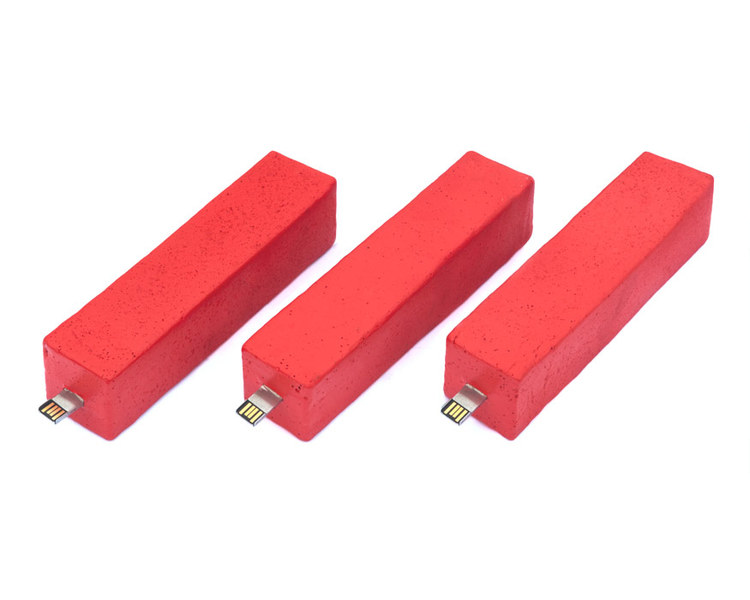



Hi Mark, first of all where are you from originally and where are you living at the moment?
Hi! I was born in Laconia, NH, grew up in Louisville, KY, and now live in Brooklyn, NY.
When did you first become fascinated with science and nature?
Since I was a kid, I have always been someone who loves to spend time outdoors, so the interest and love for the landscape has a long history with me. It’s where I find myself to be the most relaxed and focused really, which is of course funny because I now live in Brooklyn. As for science, that too has been a long time interest for me. If I hadn’t gone to school for art I certainly would have studied physics or something of that nature. Additionally, my family has a history in science as well – both my aunt and uncle are marine biologists and my father works in medicine, so science has always been near me. Most of all I am fascinated in the ways in which we understand our surroundings albeit through math, science, or art.
Do you spend a lot of time outdoors? What have been your favourite landscapes to travel to and capture?
I try to spend as much time outdoors as I possibly can, but as I said before I am now living in Brooklyn so that results in a lot of travel. One of my favorite more casual places to explore and capture are the Catskill Mountains – they’re pretty easy to get to from New York City and are absolutely stunning in the summertime – pick a stream and go swimming! But I have to say that my favorite landscape that I’ve travelled to recently is that of the Pariacaca Glacial range in the Peruvian Andes – I just got back and I’m certainly still living in the glow. I had never spent time at such high altitudes (our camp was at nearly 15,000 ft above sea level) – the landscape, wildlife, and culture is so drastically different from that at sea level.
Your work juxtaposes nature’s beauty with science and technology. What intrigues you about the combination of these?
One of the most basic intrigues about this mixture for me is the contrast in age. If you want to take it back hundreds of thousands of years ago, the landscape is the sort of birthplace of all culture and is quite literally the visual language that humans have been looking out to for the longest amount of time. Taking technology into that context provides an interesting relationship of looking at the most ancient and most contemporary of languages simultaneously.
Your ‘Emergence’ collection seems to make use of digital tools and technology to enhance or enrich the natural landscape in some way. Where does the inspiration for your ideas come from?
In ‘Emergence’, I wouldn’t venture to say that was looking to enhance the landscape as much as I was compartmentalizing and reorganizing the landscape. All of that work was made while I was an artist in residence at the Rocky Mountain Biological Laboratory in Gothic, CO. While I was there, I was working directly with ecologists and biologists in the field helping them with their field research while additionally making my own works. What resulted was ‘Emergence’, which was a reflection and personal exploration of the scientific process as a whole. You will see when looking through the images that there is a common theme of breaking down and re-assembly. I was totally fascinated in the ways in which science collects data, analyzes it, transforms it, and then reassembles it into something that when compared to another set of data, can reveal information that is new or that you had not seen prior: the idea that the whole is, or could be, in fact greater than the sum of its parts.
Do you think your work reflects a growing trend in the combining of art and technology? Is this the future?
I think that technology’s presence in art will do nothing but grow as it becomes more and more present in our every day life. As technology becomes more accessible, artists will of course find some means of using it and taking advantage of its possibilities.
//_PATH is currently being displayed in the New Realities exhibition in Barcelona. What ‘new reality’ do you hope to create in your works?
In my recent works I wish to address the larger older world, the landscape, in the context of the contemporary mindset that is situated in science and technology. Think of it as the difference between looking at a Renaissance painting today versus a Renaissance painting when it was made: today we look at composition and light in context of a world that can stop time through photography and replay it through video. When that painting was made, this perception was not even fathomable thus their perception of the work was inherently different. I want to create a reality that examines how science and technology have changed the way in which we see and experience the world around us.
In January Mark will be part a two person exhibition in Brooklyn’s Outlet Gallery with Julian Lorber. Dorf’s “Emergence” collection will be displayed alongside Lorber’s “Externalities”.
PATH is currently being displsyed in Barcelona's Mobile World Centre for the New Realities Exhibition curated by Alpha-ville ending on the 17th February.
Kept to a minimum: RICHARD SERRA at the Gagosian
Renowned for his immense sheet metal sculptures and his key role in the Minimalist movement, Richard Serra has dominated the modern and contemporary art world for decades.



Given his international prominence and the elevated value of his art, it is no surprise that Serra is represented by one of the world’s top galleries: the Gagosian. With locations in New York, Beverly Hills, Athens, Hong Kong, Geneva, Rome, Paris, and London, the gallery is home to myriad acclaimed exhibitions – including, most recently, a show featuring recent sculptures and a large-scale drawing by Serra.
Simply referred to as ‘Richard Serra’, the exhibition spans two of the gallery’s London venues: its locations on Brittania Street and Davies Street, respectively. At its Brittania location, the gallery will display Double Rift #2, a five-meter long drawing created in 2011. Abstract in nature, Double Rift #2 is comprised of paintstick on handmade paper. While it is the only Serra work that will be featured at the gallery’s location on Brittania Street, with its grand scale and bold composition, Double Rift #2 alone is not to be missed.
At its Davies Street location, the Gagosian presents several sculptural works by Serra: Backdoor Pipeline (2010), Ramble (2014), Dead Load (2014), and London Cross (2014). While, like Double Rift #2, these are among the artist’s most recent work, they are – thanks to their large scale, steel composition, and minimalist style – undeniably a work of Richard Serra and a modern art must-see.
Double Rift #2 is on view at its Brittania Street location until November 22, while you can catchBackdoor Pipeline, Ramble, Dead Load, and London Cross on Davies Street until February 28, 2015!
ArtEZ Institute of the Arts
On January the 19th, artists Hayden Kays and Benjamin Murphy will attempt to make this year’s Blue Monday a little less glum with a gift exhibition to be hosted at East London’s Lollipop Gallery.

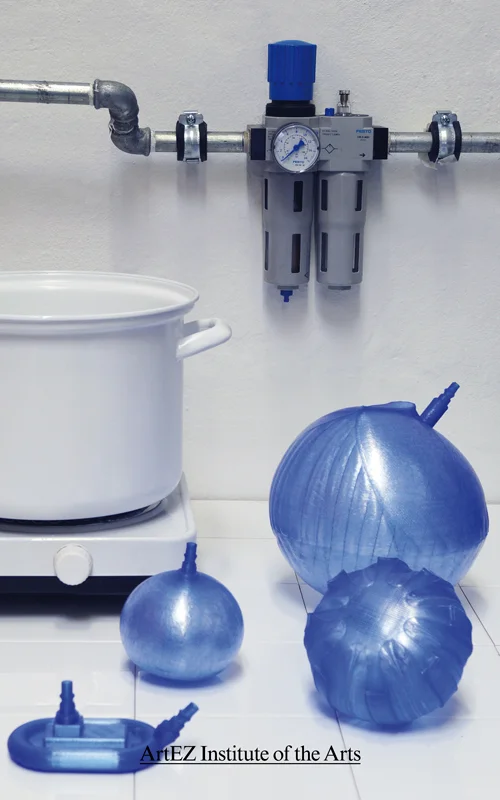

Shaping New Talent
ArtEZ Institute of the Arts in the Netherlands trains students for professions in which art, knowledge and creativity play a central role. For more than 3000 students, ArtEZ offers a related selection of Bachelor’s and Master’s degree programmes in visual art, architecture, fashion, design, music, theatre, creative writing, dance and art education. At the same time, ArtEZ is a specialised knowledge institute where lecturers combine theory and practice.
Meet our talents
The online ArtEZ finals magazine provides an impression of the graduation work of the ArtEZ Institute of the Arts’ Class of 2014: dancers, choreographers, visual artists, designers, musicians, musical therapists, art teachers, actors, and architects.
We would love to see you around for the ArtEZ finals 2015 in June and July to visit the Fashion show, the Art & Design exhibitions in Arnhem, Enschede and Zwolle and all the concerts and dance and theatre performances.
artez.nl
finals2014magazine.artez.nl
Facebook.com/artezhogeschool
@artezhogeschool
EGON SCHIELE: The radical nude




The Courtauld Gallery opens its doors to what is perhaps the most important exhibition of the year: ‘Egon Schiele: The Radical Nude’.
Today, the Courtauld Gallery opens its doors to one of the most important exhibitions of the year, ‘Egon Schiele: The Radical Nude’, a study on his drawings of male and female nudes that radicalised early 20th Century Art.
The collection brings together an exceptional body of works that are absolutely unrelenting in their technique and play on form. As the first exhibition on Egon Schiele in the last 25 years, ‘The Radical Nude’ proves itself to be a real breakthrough as the artist’s anguished, incessant and decisive lines reveal the terrible greatness in human bodies.
Fascinated by the human body in its simplest form, Schiele puts at the vanguard of his work his sister, his lovers, male friends, prostitutes, pregnant women, his later wife and himself. Through deliberate, almost awkward postures, he turns pink-fleshed bodies into haunting, emaciated figures that become even more intense and important, especially when set against the backdrop of the conservative, bourgeois atmosphere of Vienna in the early 20th Century.
There is a delight to Schiele’s unrestrained boldness – or perhaps curiosity, in tying in life and decay in such a vivid, complex way. Through his stark and raw drawings, he offers an electrifying and penetrative gaze that matters even in our contemporary times.
Egon Schiele, who trained in Vienna under Gustav Klimt in the early 1900s, quickly became known for his fascination with life, death, desire and sex –most of his works were considered pornography and he was imprisoned for two months in 1912 for contravening public decency. An unconventional artist, he subverted old traditions –his 1910 breakthrough was key in the radicalisation of the life-drawing room set-up and models’ poses, and his Gertrude studies (his sister) were crucial in his overturn of the passive, reclining nudes that adorned all the other walls of museums at the time.
Also present in the Courtauld’s collection are Schiele’s drawings of his ‘models from the street’, directly influenced by his vision that Vienna was a city with hypocrisy at heart, through which he shamelessly pulled out the most taboo issues of the time –poverty, vice, prostitution, at times rendering its subjects into creatures of desire, and at other times into tormented figures.
The intelligence of the Courtauld exhibition lies in its chosen chronology: from the nude self-portraits to his meticulous study of pregnant women and their newborns to his final years before his untimely death in 1918 from Spanish Influenza, aged just 28. It is fascinating to see Schiele’s evolution in technique and approach, and there is an honesty, an immediacy in his drawings that one cannot find in his paintings.
‘The Radical Nude’ is a unique collection that puts forward the palpable anguish, strength, provocation and desire behind Egon Schiele’s work. His unflinching portrayal of the human body is a must-see and places this exhibition at the forefront of London’s artistic cultural scene.
‘Egon Schiele: The Radical Nude’ is on at the Courtauld Gallery from the 23rd October to the 18thJanuary 2014.














